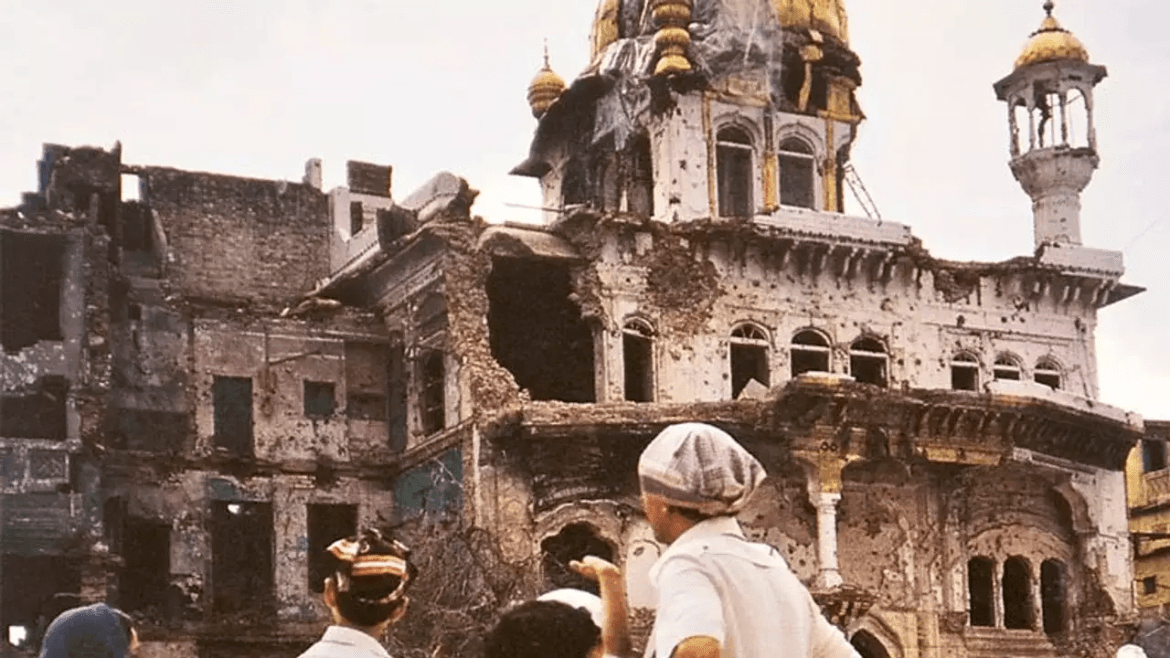AI Generated Summary
- As a Sikh, I find it imperative to reflect on the tragic events of June 1984 when the Indian Army stormed the sacred Golden Temple in Operation Blue Star.
- The accumulation of arms and the establishment of a quasi-military presence within the Golden Temple complex, possibly backed by the Pakistan ISI, marked a dangerous escalation.
- The disclosure that the British government, under Prime Minister Margaret Thatcher, provided operational advice to the Indian government led by Indira Gandhi added a new dimension to the narrative.
As a Sikh, I find it imperative to reflect on the tragic events of June 1984 when the Indian Army stormed the sacred Golden Temple in Operation Blue Star. This operation, aimed at flushing out Sikh militants led by Sant Jarnail Singh Bhindranwale, has left an indelible mark on the collective memory of Sikhs worldwide. The declassification of British documents in 2017, revealed the involvement of the British government in advising India. The ramifications of this episode are not confined to India but extend to the United Kingdom, Canada, and the United States, where sizable Sikh communities reside.
Operation Blue Star was a watershed moment in Indian history, one that continues to evoke deep emotions and unresolved questions. Was Sant Bhindranwale merely a pawn in a larger political game? What were the forces that led to such a catastrophic event? These questions demand an introspective analysis, one that goes beyond the surface-level political discourse.
The British Connection: A Storm in a Teacup?
The disclosure that the British government, under Prime Minister Margaret Thatcher, provided operational advice to the Indian government led by Indira Gandhi added a new dimension to the narrative. According to UK Foreign Secretary William Hague, this advice had a limited impact on the actual execution of Operation Blue Star. The British Cabinet Secretary’s report concluded that the UK’s assistance was purely advisory and had minimal influence on the tragic events that unfolded.
B. Raman’s book, “The Kaoboys of R&AW,” corroborates this to some extent but offers a slightly different perspective. Raman mentions that the advice from the British was to either be patient or, if immediate action was necessary, to use police forces instead of the army. The divergence in the accounts raises pertinent questions about the nature and extent of the British involvement. However, focusing solely on this aspect might detract from the broader and more crucial issues at hand.
Political Dynamics and Sant Bhindranwale’s Rise
To understand the full scope of Operation Blue Star, we must delve into the political dynamics of the time. Sant Bhindranwale did not emerge in a vacuum. His rise was intricately linked to the political strategies of the Congress party and the Akali Dal. Initially, Bhindranwale was supported by Congress to counter the Akali Dal’s influence in Punjab. However, as his popularity and power grew, he was beyond anyone’s control.
Bhindranwale’s rhetoric resonated with many Sikhs who felt marginalized and disenfranchised. The Anandpur Sahib Resolution, which called for greater autonomy for Punjab, struck a chord with the Sikh populace. Bhindranwale’s advocacy for this cause, coupled with his charismatic leadership, drew many young Sikhs into his fold. However, the accumulation of arms and the establishment of a quasi-military presence within the Golden Temple complex, possibly backed by the Pakistan ISI, marked a dangerous escalation.
The Inevitability of Tragedy?
One cannot ignore the multiple warnings and missed opportunities to resolve the situation peacefully. The government’s decision to involve the army, despite advice to the contrary, reflects a failure of political will and strategy. The tragic loss of lives during Operation Blue Star, including innocent pilgrims, remains a haunting reminder of this failure.
In Raman’s account, Indira Gandhi’s reluctance to heed the advice of using police forces instead of the army is particularly striking. The use of the army, trained to neutralize adversaries at all costs, led to a high fatality rate and significant collateral damage. This decision has been widely criticized and remains a contentious issue among historians and political analysts.
The Aftermath and the Sikh Psyche
The repercussions of Operation Blue Star were immediate and profound. The assassination of Indira Gandhi by her Sikh bodyguards led to a horrific anti-Sikh pogrom, leaving thousands dead and many more displaced. The wounds of 1984 have not healed; they have festered over the decades, shaping the Sikh community’s collective psyche.
Reflecting on these events, one must ask: Could the tragedy have been averted? What if the political leaders had acted with more foresight and sensitivity? The interplay of political forces, the manipulation of religious sentiments, and the failure of governance created a perfect storm, engulfing everyone in its path.
The Way Forward
The legacy of Operation Blue Star is a reminder of the delicate balance required in managing religious and political conflicts. It underscores the importance of dialogue, patience, and empathy in addressing issues that touch the core of community identities.
The younger generation of Sikhs, growing up in a post-1984 world, needs to be educated about the historical context and the lessons learned. The narrative should be one of resilience, hope, and the pursuit of justice through democratic means. The scars of the past should not be allowed to dictate the future; instead, they should serve as a catalyst for positive change.
While it is essential to seek the truth and hold accountable those responsible, it is equally important to focus on healing and moving forward. The Sikh community, with its rich history of resilience and fortitude, has the strength to overcome these challenges and emerge stronger. Let us honor the memory of those lost by working towards a future marked by peace, justice, and mutual respect.
The opinions expressed in this article are those of the author. They do not purport to reflect the opinions or views of Khalsa Vox or its members.




